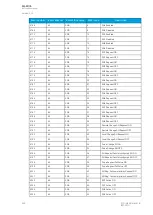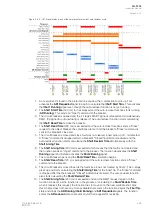
Auto-recloser scheme in radial networks
A typical medium-voltage overhead network is usually radial in structure. This does not cause any
additional requirements for the auto-recloser scheme apart from the above-mentioned limitations from
the required air de-ionization time and the capacity of the circuit breaker. Also, a typical medium-
voltage overhead line consists only of consumers and has no power generation; thus, the main
objective of the structure is to provide a stable and continuous supply of electricity.
Figure. 5.4.4 - 177. Diagram of a typical radial medium-voltage network in rural areas.
Usually, a radially built medium-voltage network in rural areas consists of a short cable connection from
the substation to the overhead line, followed by a relatively long overhead line that normally ends with
the consumer. The consumer (residence, farm, etc.) can connect to basically any point in the overhead
line with a 20 kV/0.4 kV distribution transformer. The overhead line can have many branches, and it is
not uncommon (especially in rural areas) that there are multiple forest areas the line runs through
between the consumer connections. In longer lines in sparsely populated areas it is possible to isolate
areas of the overhead line by dividing it up with disconnectors (at least in branches).
This type of application normally uses an auto-recloser with two shots (one high-speed and one
delayed) which are triggered by earth fault protection or overcurrent protection. Short-circuit protection
is used for interlocking the auto-recloser in case a clear short-circuit fault occurs in the line.
Figure. 5.4.4 - 178. Example of assigning request signals.
A
AQ
Q-F205
-F205
Instruction manual
Version: 2.04
262
© Arcteq Relays Ltd
IM00013
Summary of Contents for AQ F205
Page 1: ...AQ F205 Feeder protection IED Instruction manual ...
Page 2: ......
















































